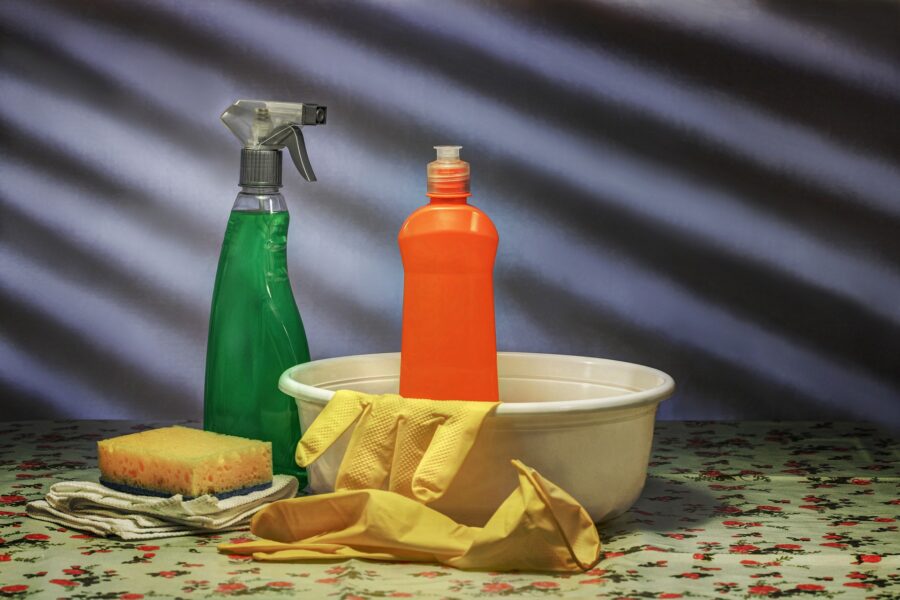By: Kelly Cawcutt, MD, MS, FACP, FIDSA; Sponsored by Clorox Healthcare
Hospital-acquired infections (HAIs) are infections acquired during medical care and are often directly related to the use of medical devices or procedures, along with lapses in critical infection control practices such hand hygiene, and appropriate cleaning and disinfection. Every day in the US, approximately 1 in 31 patients will suffer from a HAI. These infections can include central line associated bloodstream infections (CLABSI), catheter-associated urinary tract infections (CAUTI), surgical site infections (SSIs), ventilator-associated pneumonia (VAP) and development of Clostridiodes difficile infection (CDI). The Centers for Disease Control (CDC), along with State and county health departments, along with individual hospitals, monitor these closely via reports to the National Healthcare Safety Network, which assess outbreaks and monitors progress towards future prevention efforts – with a goal of elimination of HAIs in the future of medicine.
The impact of COVID-19 on HAIs may ultimately be profound due to the use of antibiotics for possible bacterial co-infection and prolonged ICU stays, including the use of multiple invasive devices placing these vulnerable patients at risk for CLABSI, CAUTI, VAP, CDI. Additional factors clearly impacting HAIs in during this pandemic include lack of appropriate resources and supply chain issues (such as personal protective equipment and testing supplies), combined with varying rates of infected healthcare workers and risk of burnout impacting the available workforce. Finally, there is ongoing concern that fear amidst this pandemic may negatively impact adherence to infection control practices. Never has prevention of HAIs been more critical given the burden of COVID-19 on healthcare around the world.
Prevention of HAIs
Prevention of HAIs is comprised of several key concepts: avoid both device placement and antibiotic use unless clearly indicated, remove devices and stop antibiotics as soon as possible, and follow infection control measures for the healthcare workers and environment (such as standard and transmission-based precautions, hand hygiene and environmental and equipment cleaning).
With the clear impact of HAIs, there are several different guidelines focusing on how to prevent HAIs. A few critical recommendations and guidelines are:
- The Society for Healthcare Epidemiology of America’s compendium of strategies to prevent HAIs
- CDC guidelines for preventing HAIs
- WHO guidelines for infection prevention
Anyone within the healthcare field, including the patient, is accountable to help prevent HAIs. This is truly a multidisciplinary effort!
Patient’s role
In the end, we are all patients and, as mentioned above, can play a role in prevention of HAIs. There are several key actions anyone can take to keep ourselves, and our loved ones, safe from these infections. Practicing excellent hand hygiene, watching closely for signs of developing infection, remembering to only take antibiotics when your healthcare team feels it is necessary and remaining an advocate for safety throughout your hospital stay (such as reminding healthcare workers to perform hand hygiene). (Here is a quick video on five tips to prevent HAIs as a patient.)
Device-Related Risks
There are many invasive devices that are frequently used for patient care, and once they are in place for at least 48 hours, those devices carry the risk for a possible reportable HAI to develop. Some patients require infusions of medications or frequent access to blood draws and monitoring, therefore may have a central venous catheter placed, thereby creating a simultaneous risk for developing CLABSI. Certain patients will have trouble urinating, or need very close monitoring of urine output due to impaired kidney, so an indwelling urinary catheter is inserted and, with that, the risk for CAUTI arises. Patients with severe lung disease, such as those with respiratory failure from COVID-19, may require invasive mechanical ventilation, as provided via an endotracheal tube. Much like the two catheters listed above, with insertion and use of the endotracheal tube, the risk for development of VAP evolves.
In essence, all of these devices are inserted through a potential non-sterile source and therefore carry a risk for bacteria to create a biofilm on the external surface of the catheter, or have bacterial inoculated on the internal surface during cares, increasing the risk of a possible life-threatening HAI. Understanding appropriate indications, insertion techniques, maintenance and prompt removal, once no longer indicated, is of paramount importance.
Environmental Cleaning

Infections can spread within the healthcare setting, including based on inadequate environmental cleaning. CDI is one such infection, which is highlighted below. Additionally, there are many aspects of the environment to consider, such as the high touch surfaces at risk for contamination based on lack of hand hygiene. Air-based contamination are based on infectious aerosols (which may additionally occur via coughing, sneezing, flushing a toilet, procedures for a patient that may generate aerosols such as suctional or intubation) or mold secondary to construction or other damage. Water-based contamination can be found in ice machines, faucets, drains and with equipment that utilizes water but is not maintained or cleaned via manufacturer instructions-for-use (IFUs).
All of these simple components around us can serve as conduits for infection. Although this may be top of mind for many during this pandemic and tempt us to focus only on COVID-19, the more ‘mundane’ aspects of environment infection control are just as important in 2020 as they were each year prior. It’s critical that healthcare team members, including nurses, doctors, technicians and EVS staff responsible for cleaning equipment, or the environment, use products that are EPA-registered to be effective against these HAIs.
Seeing C. diff Differently – What Has Changed in Prevention?
CDI is the most common cause of HAIs in the US, with specific guidelines for infection prevention given its prevalence from national societies (Infectious Diseases Society of America and the Society of Healthcare Epidemiology of America) and from the CDC. There are several key steps to preventing CDI as a HAI:
- Antibiotic use is the primary driver for development of CDI, therefore it is imperative to follow antibiotic stewardship principles to minimize risk of development of CDI.
- Implement contact precautions for those with confirmed or suspected infections, to avoid unintended spread to others.
- Consider use of innovative engineering for improving adherence to isolation precautions with solutions such as the ‘Red Box.’
- Maintain appropriate personal protective equipment with gowns, gloves and hand washing (especially in outbreak settings) to prevent spread of spores.
- Confirm with appropriate testing strategies. This is key as colonization exists with this organism, so non-infectious etiologies should be considered, do not test if laxatives have been used in the last 48 hours, do not send solid stool for testing and remember that repeat testing for cure is not necessary.
- If non-disposable equipment is used, dedicating equipment to the patient room should be done if possible. If there is an inadequate equipment supply, cleaning before and after each patient use should be done. For CDI, even if using a 2-in-1 product, cleaning should occur prior to disinfecting and should be completed with a compatible sporicidal disinfectant (EPA List K agents; such as Bleach Germicidal Wipes) should be utilized.
- Terminal room cleaning for patient rooms in which C. diff was present is also critical to prevent ongoing spread of infection as the spores can survive for months within the hospital room and many standard disinfectants are ineffective, therefore effective disinfection is critically important, especially during outbreak situations. Methods may include cleaners, such as Bleach Germicidal Disinfectants.
Despite all the efforts on COVID-19, as frontline healthcare teams, we must all pitch in to continue the fight against HAIs. Our patients are depending on us.
Full original post can be found here: https://www.cloroxpro.com/blog/infection-inside-out-focus-on-hospital-acquired-infections/
